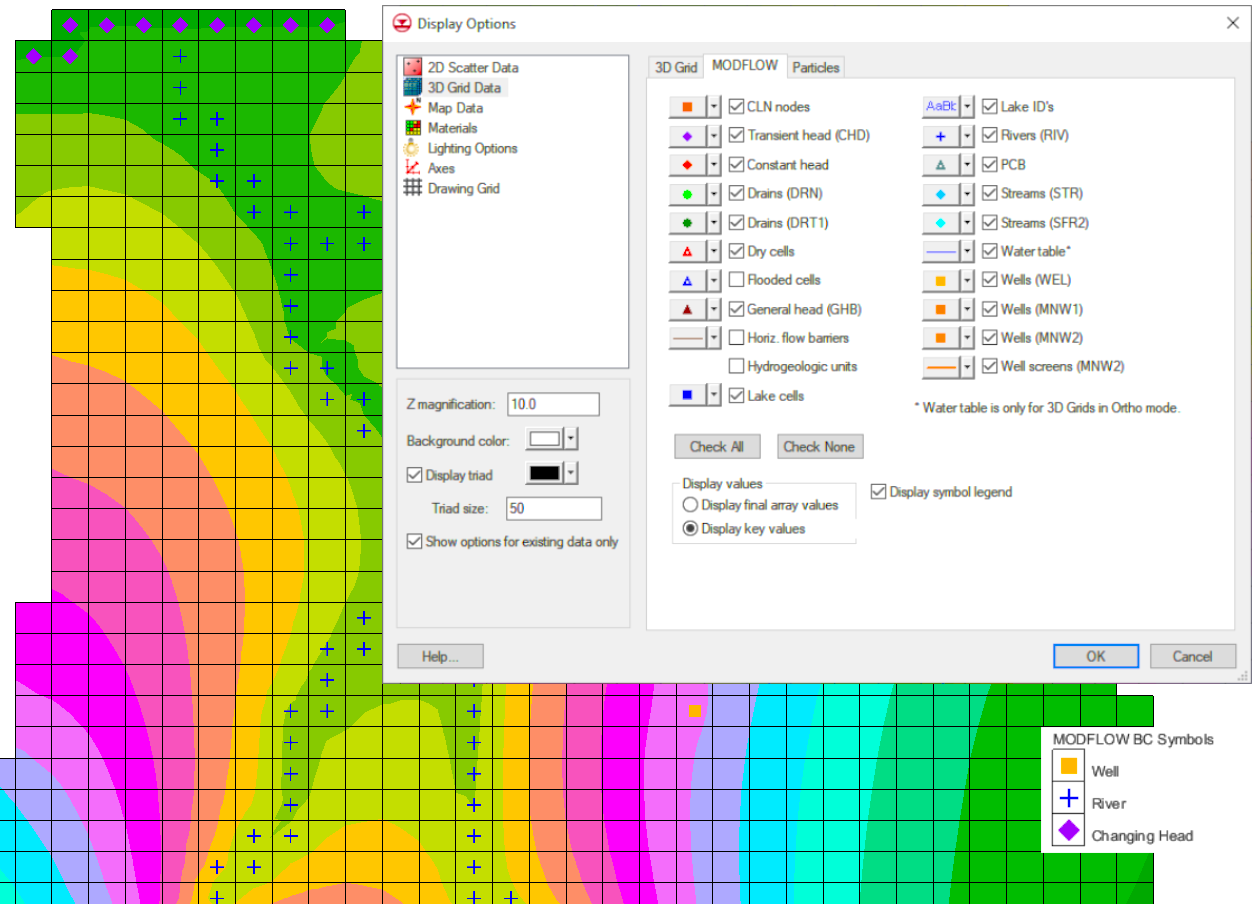Streamlining GMS by Using Keyboard Shortcuts
By aquaveo on July 9, 2024No matter how long you have been using the Ground-water Modeling System (GMS), you can enhance your experience with keyboard shortcuts. GMS comes equipped with various keyboard shortcuts–quick keys, hotkeys, accelerator keys, keybindings–in order to make the process more efficient for you. Whether you are just beginning or seasoned, such shortcuts are useful for any water modeling project.
The newest addition to the collection is related to the GMS unstructured grid (UGrid) feature, and facilitates progress with one click: Select all cells in UGrid layer using the “l” (L) key.

Here are a few more shortcut options that expedite the groundwater modeling process:
- CTRL+D (Display Options): Quickly populate your display options module for view and modification.
- CTRL+F (Frame Image): Use this option to scale and frame your model in the Main Graphics Window.
- View: Utilize these options and view your project from any perspective quickly.
- Shift+P (Plan View)
- Shift+F (Front View)
- Shift+S (Side View)
- Shift+O (Oblique View)
With all of the intricacies of the GMS software, simplifying even the smallest commands may increase productivity in infrastructure planning:
- CTRL+N (New Project): Clear the contents of your previous project easily with this command.
- CTRL+O (Open File): Import a new file with this command.
- Delete Key: Delete objects easily with this command.
- CTRL+A (Select All): Select all objects easily with this command.
- CTRL+U (Unselect All): Unselect all objects easily with this command.
Mastering keyboard shortcuts is a key aspect of becoming a proficient user of GMS. By taking advantage of these time-saving tools, users can navigate the environmental engineering software more efficiently, focus on their modeling tasks, and ultimately achieve better results in their water modeling projects. Use the "GMS Keyboard Shortcuts" article on the Aquaveo wiki to view these commands and more.
Additional shortcuts continue to be added to GMS. Access the latest version of GMS to make use of the newest shortcuts today!









